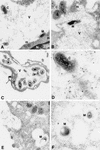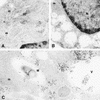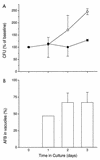Survival of Mycobacterium avium and Mycobacterium tuberculosis in acidified vacuoles of murine macrophages
- PMID: 10377091
- PMCID: PMC116496
- DOI: 10.1128/IAI.67.7.3199-3206.1999
Survival of Mycobacterium avium and Mycobacterium tuberculosis in acidified vacuoles of murine macrophages
Abstract
Despite the antimicrobial mechanisms of vertebrate phagocytes, mycobacteria can survive within the phagosomes of these cells. These organisms use various strategies to evade destruction, including inhibition of acidification of the phagosome and inhibition of phagosome-lysosome fusion. In contrast to mycobacteria, Coxiella burnetii, the etiologic agent of Q fever, inhabits a spacious acidified intracellular vacuole which is prone to fusion with other vacuoles of the host cell, including phagosomes containing mycobacteria. The Coxiella-infected cell thus provides a unique model for investigating the survival of mycobacteria in an acidified phagosome-like compartment. In the present study, murine bone marrow-derived macrophages were infected with either Mycobacterium avium or Mycobacterium tuberculosis and then coinfected with C. burnetii. We observed that the majority of phagocytosed mycobacteria colocalized to the C. burnetii-containing vacuole, which maintained its acidic properties. In coinfected macrophages, the growth of M. avium was not impaired following fusion with the acidified vacuole. In contrast, the growth rate of M. tuberculosis was reduced in acidified vacuoles. These results suggest that although both species of mycobacteria inhibit phagosome-lysosome fusion, they may be differentially susceptible to the toxic effects of the acidic environment in the mature phagolysosome.
Figures





References
Publication types
MeSH terms
Grants and funding
LinkOut - more resources
Full Text Sources

